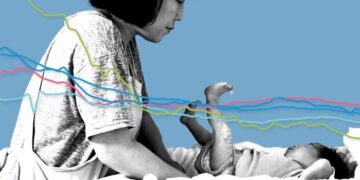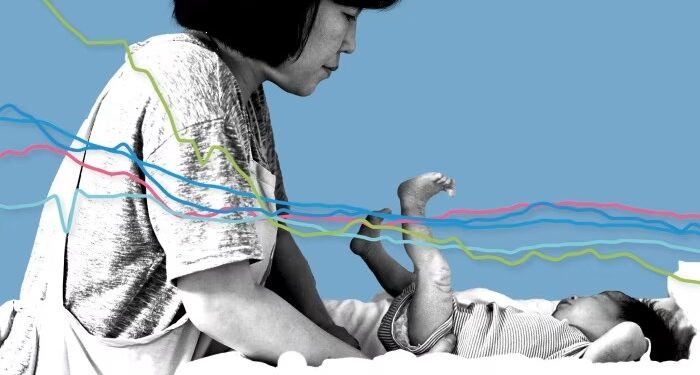By Lucy Adautin
A study has revealed that birth rates in the world’s wealthy economies have more than halved since 1960, reaching a historic low. The report urges nations to prepare for a “lower fertility future.”
According to the OECD study released on Thursday, the average number of children per woman in the 38 most industrialized countries has decreased from 3.3 in 1960 to 1.5 in 2022.
The current fertility rate is significantly below the “replacement level” of 2.1 children per woman—required for a population to remain stable without immigration—in all OECD member countries except Israel.
“This decline will transform societies, communities, and families, potentially having substantial impacts on economic growth and prosperity,” cautioned the Paris-based organization.
Slowing population growth hampers economic expansion. In the EU, increasing overall labor force participation will soon be insufficient to offset the decline in the working-age population, worsening labor shortages, according to the IMF and European Commission’s 2024 ageing report.
Low birth rates, combined with rising life expectancy, are straining public finances by reducing tax revenues needed to support an aging population. This demographic shift is also leading to more school closures in Europe, Japan, and South Korea.
Willem Adema, a senior economist at the OECD and co-author of the report, suggested that countries could support higher fertility rates by promoting gender equality and more equitable sharing of work and parenting responsibilities.
The study noted a positive link between female employment rates and higher fertility rates but identified the cost of housing as a growing obstacle to having children.
However, Adema cautioned that even family-friendly policies are unlikely to raise birth rates to replacement levels.
A “low fertility future” would require a focus on immigration policies, he added, as well as “measures which can help people to stay healthy and work longer, and productivity improvements more generally”.
France and Ireland have the highest fertility rates in Europe, with anglophone and Nordic countries also ranking high. Hungary has increased its fertility rate to the OECD average through significant investment in family benefits.
Southern Europe and Japan have the lowest fertility rates at about 1.2 children per woman, with South Korea having the lowest at around 0.7. Surprisingly, countries with strong family support policies like Finland, France, and Norway have also seen declines in birth rates.
The OECD attributes the decline in family formation to the “second demographic transition,” reflecting greater individual freedom and diverse life goals. Childlessness has more than doubled among women born in 1975 compared to those born in 1955, with notable increases in Italy, Spain, Japan, Austria, and Germany.
The average age for first-time mothers in the OECD rose to nearly 30 in 2020 from 26.5 in 2000, exceeding 30 in Italy, Spain, and South Korea. Delaying childbirth increases the risk of not having children, reflecting a growing desire to pursue life goals that do not include children.


































